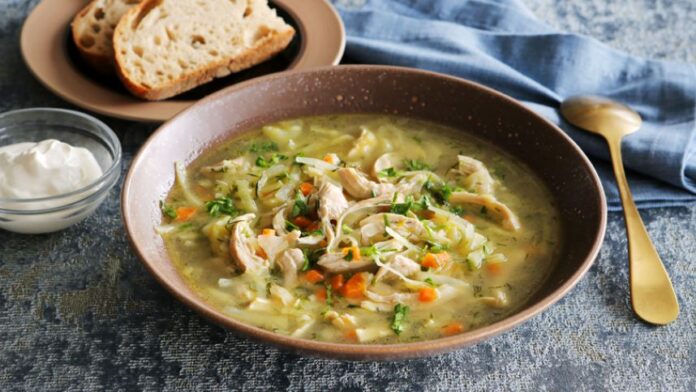
With the end of warm weather, for a while we‘ll feel nostalgic for our sundresses and BBQ‘s, even though they were limited this year due to COVID. Cold beet soup season is over, and long-sleeve weather is a good excuse to think about making some real soup. Most Lithuanians were raised on it, and for some, no meal is complete without soup as a starter. Soup is also good for you, and filling as a lunch.
There is an old adage in Lithuanian that was used to describe the recipe for Lithuanian cabbage soup: Ką įdėsi, tą ir rasi! This can be said for many aspects of life, of course, and there‘s a ring to it in Lithuanian that we can‘t duplicate in English but it is equally well known – What you put in it is what you‘ll get out of it…
Also – do you remember the story of stone soup? A hungry stranger came to my grandmother‘s door and said “Let me in and I‘ll show you how to make soup from this stone“, and convinced her to add a bit of onion, a bit of pork, a bit of potato, a bit of carrot, a bit of salt, a bit of pepper… and you can guess the rest.
To my knowledge, there are two types of cabbage soup, one using fresh cabbage, and the other using sauerkraut, or rauginti kopūstai. Either way, you have to start with a broth. You may want to make it from scratch, using a pork hock or a ham bone or pork ribs or whatever else you usually for a pork broth. Other than bone broth I make from chicken bones in my instant pot, I just use pre-made stock, and add some type of smoked sausage, back bacon or pancetta to enhance the flavour.
Lithuanian cooks are probably all cut from the same cloth as my mother and mother-in-law, because there is no such thing as using a measuring spoon in the first recipe I came across online. Salt and pepper (as well as other seeds and grainy ingredients) are measured in žiupsniai. Seriously, the recipe called for a cabbage, a carrot, an onion, a žiupsnis each of salt, pepper and caraway seed, and “several“ pieces of meat… True enough.
What is a žiupsnis?, you may ask. Although the dictionary defines it as a pinch, I have witnessed my elders cooking, and I know they did not pinch or dash salt, but poured it into the palm of one hand, looked at it with a wise eye and tossed it into the mix. If your fingers are curved upward, as when asking for a handout, the salt will settle in the little bowl your hand has formed. If it looks like a lot – it‘s a teaspoon. If it‘s not that much – it‘s a half teaspoon. Try it!
Back to our kopūstai (cabbages): for plain cabbage soup, you use a head (or a half) fresh cabbage, shredded; chopped onion, carrot and celery, bay leaf, salt and pepper (“to taste“, as they say in English recipes) and some type of unsmoked or smoked meat, bacon or even tiny meatballs. For marinated cabbage (sauerkraut) soup, use half a litre (or more, depending on how you buy it, e.g., a can, a jar) of sauerkraut plus the rest of the same ingredients. And carawy, if you like it. If you like tomato flavours, some recipes I‘ve read call for the addition of stewed tomatoes and or a half-cup of ketchup.
There are as many recipes as there are cooks, but the rule is to serve any cabbage (or any) soup with potatoes and sour cream. Some people take short cuts, and put diced potatoes in the soup and top each serving with a dollop of sour cream.
Trust me, you can‘t make a mistake, as long as your broth has a sufficiently deep flavour. Send us your favourites at [email protected]. Thanks for visiting!
Ramūnė J.





























